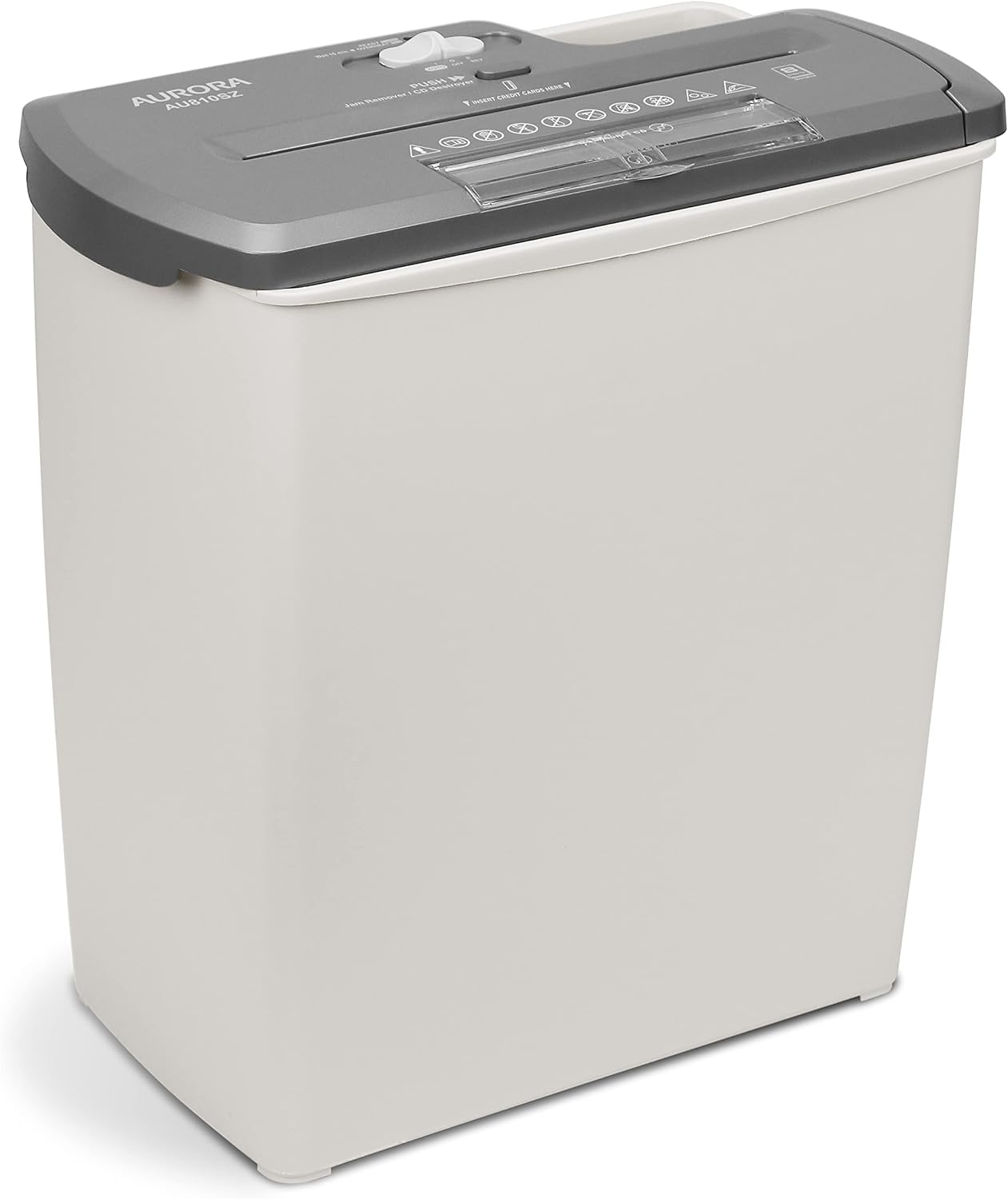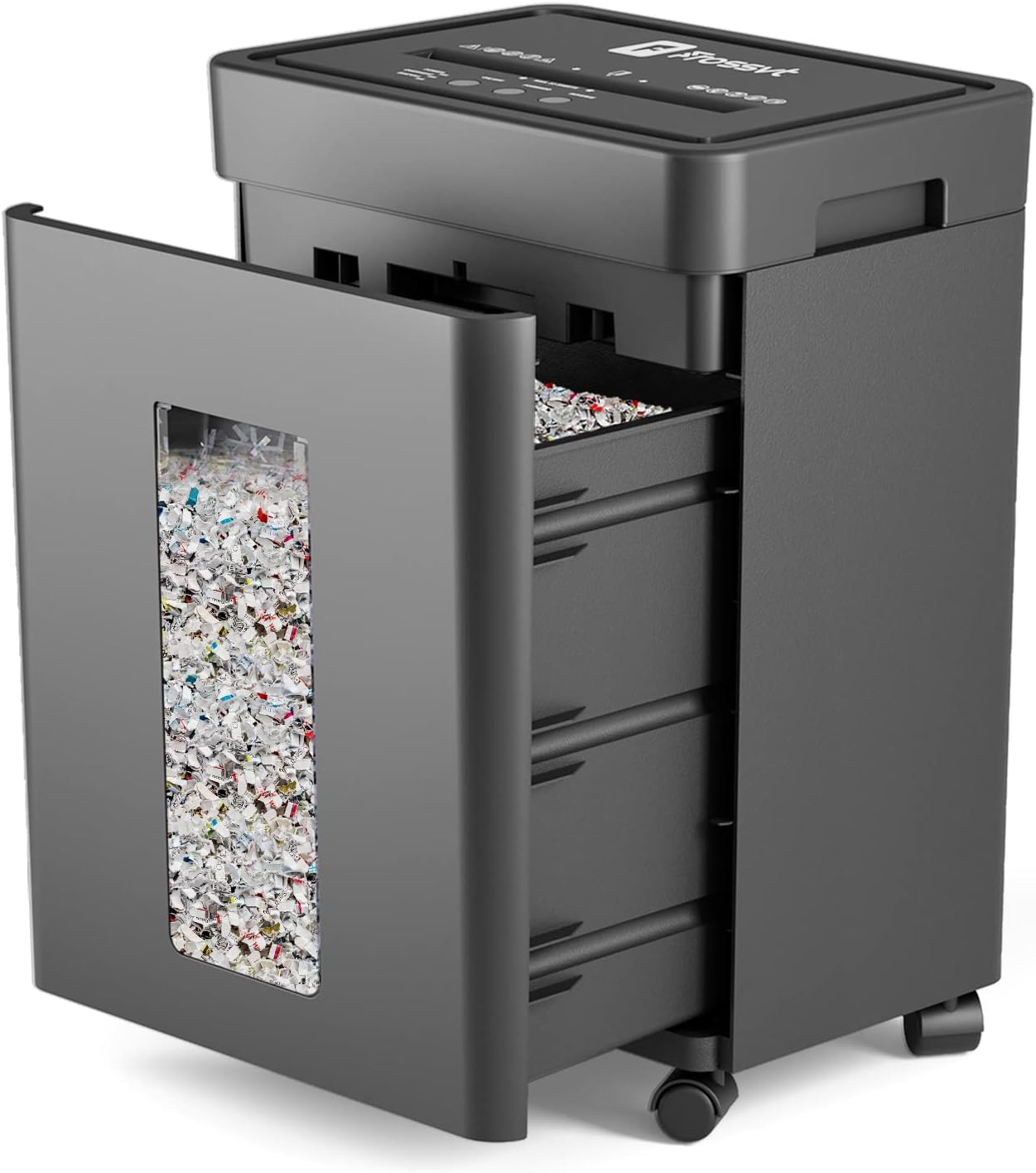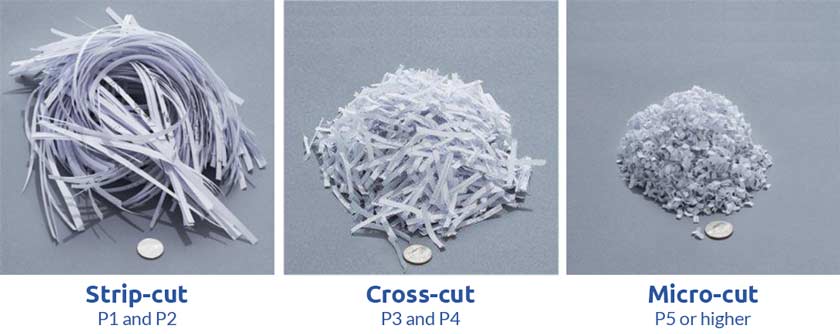You may not give much thought to the type of cut your shredder produces, but it can actually make a big difference in your shredding experience. When it comes to choosing the best cut for your shredder, there are a few factors to consider. From strip-cut to cross-cut and micro-cut, each type offers different levels of security and efficiency. In this article, we will explore the advantages and disadvantages of each type of cut, helping you make an informed decision for all your shredding needs. So, let’s dive into the world of shredder cuts and find out which one is truly the best for you.
Types of Cuts for Shredders
There are several types of cuts available for shredders, each offering different levels of security and convenience. The most common types of cuts are strip-cut, cross-cut, micro-cut, particle-cut, and diamond-cut. Choosing the right cut for your shredder depends on your specific needs and the level of security required for your documents.
Strip-Cut Shredders
Description
Strip-cut shredders, also known as ribbon-cut or spaghetti-cut shredders, are the most basic type of shredders available. As the name suggests, they cut documents into thin strips, typically between 1/8 to 1/4 inch wide. These shredders are suitable for personal or small office use where basic document disposal is required.
Advantages
Strip-cut shredders are usually more affordable compared to other types of shredders. They have a higher shredding capacity and require less maintenance since they produce larger strips, resulting in fewer shredder jams. Strip-cut shredders also have a faster shredding speed, making them suitable for high-volume shredding.
Disadvantages
The main disadvantage of strip-cut shredders is the lower level of security they offer. Since the documents are only cut into strips, it is relatively easy for someone to reassemble shredded documents. This makes strip-cut shredders less suitable for disposing of highly confidential or sensitive information.
Suitable for
Strip-cut shredders are ideal for personal use, small offices, or organizations that deal with non-sensitive documents. They are also suitable for applications where high security is not a top priority.
Security Level
Strip-cut shredders are considered to provide a low level of security, often classified as Level 1. While they offer basic document destruction, it is important to remember that the strips can still be reconstructed with some effort.
Examples
Some examples of strip-cut shredders include the AmazonBasics 8-Sheet Strip-Cut Paper Shredder and the Fellowes Powershred 79Ci Strip-Cut Shredder.
Cross-Cut Shredders
Description
Cross-cut shredders, also known as confetti-cut or diamond-cut shredders, provide a higher level of security compared to strip-cut shredders. They cut documents in both vertical and horizontal directions, producing small cross-cut particles. The size of the particles can vary depending on the shredder, with most cross-cut shredders producing particles around 1/4 to 1/2 inch in size.
Advantages
Cross-cut shredders offer a higher level of security compared to strip-cut shredders. The shredded particles are much smaller and more difficult to reassemble, making it harder for unauthorized individuals to access sensitive information. These shredders are suitable for most personal and office use, offering a good balance between security and convenience.
Disadvantages
One disadvantage of cross-cut shredders is that they typically have a slightly lower shredding capacity compared to strip-cut shredders. The smaller particles require more cutting and tend to fill up the shredder’s bin faster. Cross-cut shredders may also produce more noise compared to strip-cut shredders, although noise levels vary depending on the specific model.
Suitable for
Cross-cut shredders are suitable for personal use, small businesses, and organizations that handle sensitive or confidential information. They provide a higher level of security while still maintaining a reasonable shredding capacity for everyday use.
Security Level
Cross-cut shredders are considered to provide a general level of security, often classified as Level 2. The smaller particles make it significantly more difficult for unauthorized individuals to reconstruct shredded documents.
Examples
Some examples of cross-cut shredders include the Bonsaii 10-Sheet Cross-Cut Paper Shredder and the Fellowes Powershred 125Ci Cross-Cut Shredder.
Micro-Cut Shredders
Description
Micro-cut shredders offer the highest level of security among the commonly available shredder types. They use an advanced cutting mechanism to turn documents into tiny particles, typically resembling confetti. The size of the particles is significantly smaller compared to cross-cut shredders, typically measuring around 1/8 inch or less.
Advantages
Micro-cut shredders provide the highest level of document security, making it extremely difficult for anyone to reconstruct shredded documents. The tiny particles offer a significantly higher level of protection for sensitive or confidential information. Despite their higher level of security, micro-cut shredders still offer a reasonable shredding capacity for personal and office use.
Disadvantages
One of the main disadvantages of micro-cut shredders is their higher cost compared to strip-cut or cross-cut shredders. The advanced cutting mechanism required to produce such small particles increases the price of these shredders. Micro-cut shredders also tend to have a slightly lower shredding speed compared to strip-cut or cross-cut shredders.
Suitable for
Micro-cut shredders are ideal for individuals or organizations that deal with highly sensitive or confidential information, such as government agencies, financial institutions, or legal offices. They provide the highest level of security while still offering a practical shredding capacity.
Security Level
Micro-cut shredders are considered to provide a confidential level of security, often classified as Level 3. The tiny particles ensure that even the most determined individuals would have a difficult time reconstructing shredded documents.
Examples
Some examples of micro-cut shredders include the AmazonBasics 6-Sheet Micro-Cut Paper Shredder and the Fellowes Powershred 99Ms Micro-Cut Shredder.
Particle-Cut Shredders
Description
Particle-cut shredders, also known as confetti shredders, offer a high level of security similar to micro-cut shredders. They cut documents into small, square or rectangular particles of varying sizes. The shredded particles resemble confetti, providing a higher level of document destruction compared to strip-cut or cross-cut shredders.
Advantages
Particle-cut shredders offer a high level of security, making it difficult for shredder users to reconstruct shredded documents. The irregular shape of the shredded particles adds an additional layer of complexity to the reconstruction process. These shredders also offer a reasonable shredding capacity suitable for personal or office use.
Disadvantages
One of the disadvantages of particle-cut shredders is their higher cost compared to strip-cut or cross-cut shredders. The irregular shape of the shredded particles may also require more frequent emptying of the shredder’s bin, as they can take up more space compared to strips or small confetti-like particles.
Suitable for
Particle-cut shredders are suitable for individuals or organizations that require a higher level of document security without the need for micro-cut shredders. They provide a good balance between security and convenience, making them ideal for most personal or office shredding needs.
Security Level
Particle-cut shredders are considered to provide a confidential level of security, often classified as Level 3. The irregular shape of the shredded particles adds an extra level of difficulty in reconstructing shredded documents.
Examples
Some examples of particle-cut shredders include the Swingline Stack-and-Shred 130X Auto Feed Shredder and the Fellowes Powershred 225Mi Particle-Cut Shredder.
Diamond-Cut Shredders
Description
Diamond-cut shredders, also known as micro-cut with square particles, offer a high level of security similar to micro-cut shredders. They cut documents into small, diamond-shaped particles. These particles provide an extra layer of complexity for reconstructing shredded documents, further enhancing the document security.
Advantages
Diamond-cut shredders offer a high level of document security, making it extremely difficult for unauthorized individuals to access shredded information. The diamond-shaped particles add an additional level of difficulty to the reconstruction process. These shredders also offer a reasonable shredding capacity suitable for personal or office use.
Disadvantages
One of the main disadvantages of diamond-cut shredders is their higher cost compared to strip-cut or cross-cut shredders. The complex cutting mechanism required to produce the diamond-shaped particles increases the price of these shredders. Diamond-cut shredders may also have a slightly lower shredding speed compared to strip-cut or cross-cut shredders.
Suitable for
Diamond-cut shredders are suitable for individuals or organizations that require a higher level of document security without the need for micro-cut shredders. The diamond-shaped particles offer a unique level of security for documents that require utmost protection.
Security Level
Diamond-cut shredders are considered to provide a confidential level of security, often classified as Level 3. The diamond-shaped particles make it extremely challenging for unauthorized individuals to reconstruct shredded documents.
Examples
Some examples of diamond-cut shredders include the Bonsaii EverShred C149-C Micro-Cut Shredder and the AmazonBasics 15-Sheet Diamond-Cut Paper Shredder.
Security Level
When choosing a shredder, it is important to consider the security level offered by the shredder. Different levels of security are classified based on the size and shape of the particles produced by the shredder. The higher the security level, the more difficult it is for unauthorized individuals to reconstruct shredded documents.
The commonly used security levels for shredders include:
Level 1 – Low Security
This level offers basic document destruction, typically with strip-cut shredders. While it provides a minimal level of security, it is important to note that shredded strips can still be reconstructed with some effort.
Level 2 – General Security
This level offers a higher level of security compared to Level 1. Cross-cut shredders fall into this category as they produce smaller particles that are difficult to reassemble.
Level 3 – Confidential Security
This level offers a higher level of document security, ideal for shredding documents with sensitive or confidential information. Micro-cut, particle-cut, and diamond-cut shredders fall into this category.
Level 4 – Secret Security
This level offers a higher level of security suitable for shredding highly sensitive information. Shredders that produce smaller particles or use advanced cutting mechanisms fall into this category.
Level 5 – Top Secret Security
This level offers an even higher level of document security, suitable for shredding top-secret or classified information. Shredders with advanced cutting mechanisms, such as high-security government shredders, fall into this category.
Level 6 – High Security
This level offers the highest level of document security, typically used for shredding the most sensitive and classified information. Shredders with advanced cutting mechanisms and additional security features fall into this category.
When choosing a shredder, it is important to match the security level with the sensitivity of the information being shredded. Higher security levels often come with higher costs, so it is crucial to assess your specific security needs before making a purchase.
Capacity
In addition to security level, another important factor to consider when choosing a shredder is its capacity. Shredder capacity refers to the number of sheets the shredder can shred at once and the size of the shredder’s bin.
Sheet Capacity
The sheet capacity of a shredder determines how many sheets of paper can be fed into the shredder at once. Shredders typically have a specified maximum sheet capacity, ranging from a few sheets to over 100 sheets. It is important to consider your shredding needs and the volume of documents you need to shred regularly. Opting for a higher sheet capacity can save time, as you can shred more sheets in a single pass.
Bin Capacity
The bin capacity of a shredder refers to the size of the container that holds the shredded material. Shredders with larger bin capacities can hold more shredded material before requiring emptying. It is important to consider the bin capacity, especially for high-volume shredding or in office environments where multiple users will be utilizing the shredder. A larger bin capacity reduces the frequency of emptying and increases overall efficiency.
When choosing a shredder, consider both the sheet capacity and bin capacity based on your specific shredding needs. A higher capacity shredder may be necessary for larger volumes of documents or in environments where multiple users will be utilizing the shredder simultaneously.
Noise Level
The noise level of a shredder is an important consideration, especially if you plan to use the shredder in a shared office space or in a noise-sensitive environment. Shredders can vary in the amount of noise they produce, typically measured in decibels (dB).
Decibel (dB) Rating
The decibel (dB) rating is used to measure the intensity of sound. The higher the dB rating, the louder the sound produced by the shredder. Shredders can have a range of noise levels, with quieter shredders producing around 60-65 dB and louder shredders producing over 70 dB.
When choosing a shredder for a noise-sensitive environment, look for models with lower dB ratings. Additionally, some shredders come with noise reduction features or technologies that help minimize noise during operation.
In conclusion, choosing the right type of cut for your shredder depends on the level of security you require and your specific shredding needs. Strip-cut shredders are suitable for basic document disposal, while cross-cut, micro-cut, particle-cut, and diamond-cut shredders provide higher levels of security. Consider the security level, capacity, and noise level when selecting a shredder that fits your requirements. With the right shredder, you can securely dispose of your sensitive information and protect your privacy.



